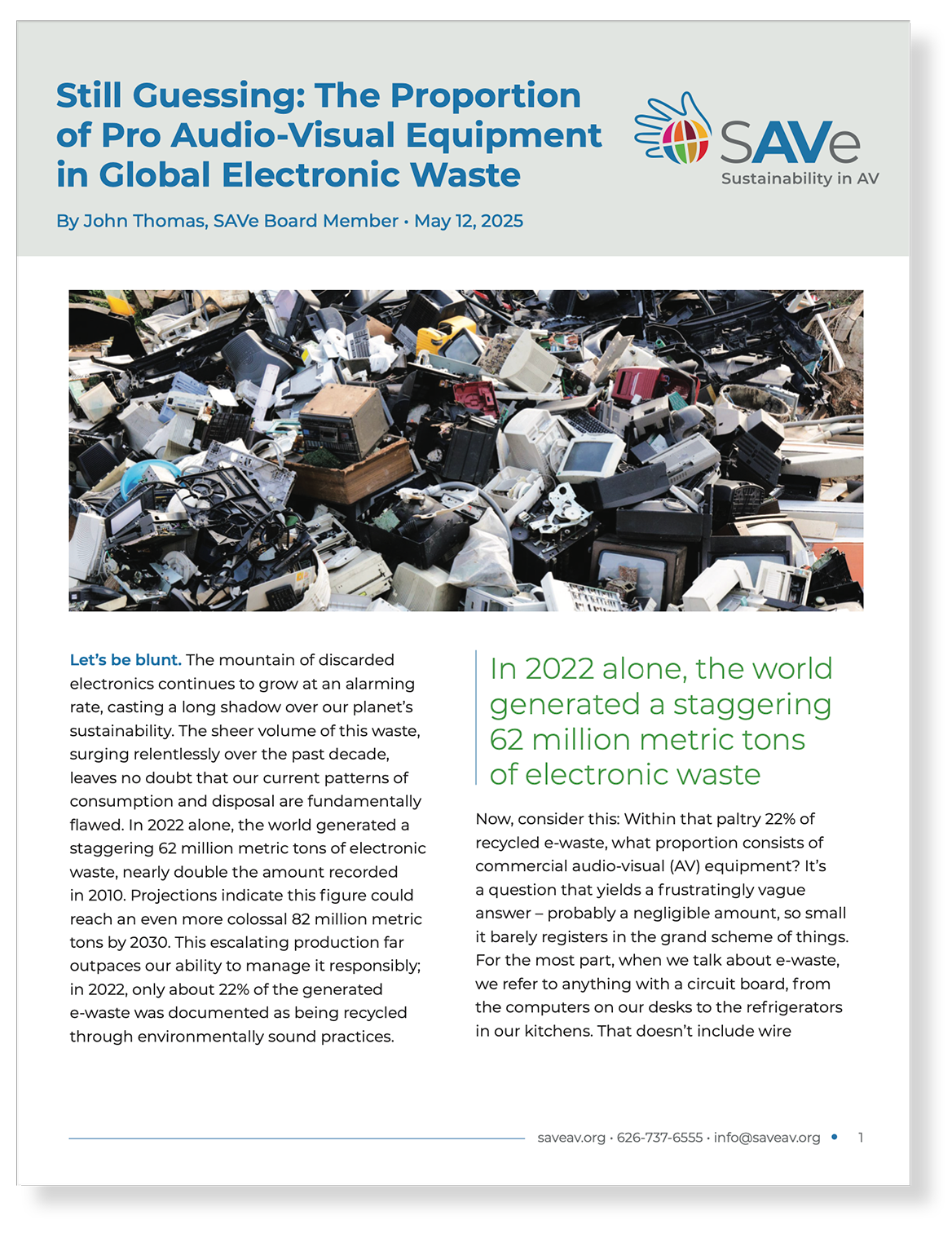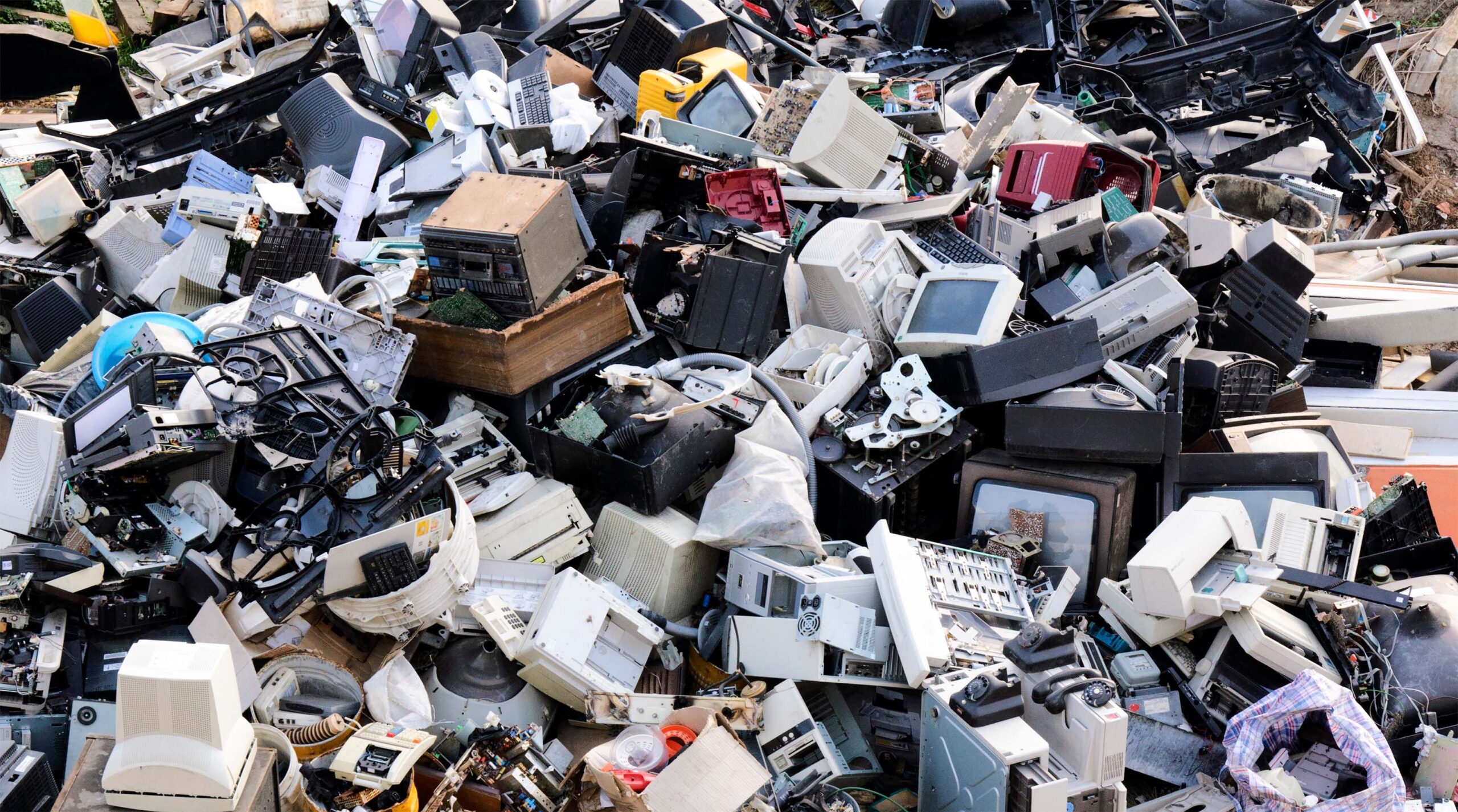How much does our industry add to the scourge of electronic waste?
Because of a lack of data, we’re Still Guessing, says SAVe Board Member John Thomas in his new article.
One thing we DO know: The volume of e-waste being generated globally is staggering, outstripping our ability to properly recycle it.
You can’t have a solution without a system

Read the article by SAVe’s John Thomas discussing Pro AV’s contribution to the staggering problem of global electronic waste.
A major hurdle is that we have no system for commercial AV waste. Manufacturers aren’t involved at the end-of-life stage of their products, and recyclers don’t differentiate between a high-end video processor and a standard computer. Lack of specific data makes it incredibly difficult to understand the true impact of our industry’s discarded equipment.
It appears that commercial AV equipment gets lumped into broader e-waste categories like ‘small equipment,’ ‘large equipment,’ or ‘IT and telecommunications equipment.’ While smaller AV components might fit into ‘small equipment’ and networked systems into ‘IT,’ these categories are too broad to give us any meaningful insight into the specific amounts of AV waste. Consumer electronics also fall into these categories, further muddying the waters.
The lifespan of commercial AV gear varies quite a bit. Displays tend to have a shorter lifespan due to rapid technological advancements, while audio systems can last longer. This constant cycle of upgrades contributes to the e-waste stream. While there are responsible disposal methods like reuse, manufacturer returns, and certified recyclers, the actual rates of recycling for AV equipment aren’t well-documented.
Looking at the bigger picture of global e-waste
It’s clear that a vast amount of valuable materials are being lost due to low recycling rates. While reports provide data on categories like small devices and IT equipment, commercial AV is conspicuously absent. This lack of specific data underscores the urgent need for better tracking within our sector.
Commercial AV equipment is distinct from consumer electronics, boasting higher performance and specialized functions. This includes everything from large projectors to complex control systems. However, current e-waste reporting doesn’t recognize this distinction, making it hard to pinpoint our industry’s contribution. The broad categorization of AV equipment within existing frameworks further complicates accurate assessment.
Without concrete data, it’s tough to gauge our environmental impact and improve recycling efforts for commercial AV; however, updated regulations and initiatives, like those in California and the Basel Convention, signal a growing global push for better e-waste management. It’s crucial for future research to focus on creating clear definitions and reporting methods for commercial AV e-waste. Collaboration within the AV industry and with e-waste organizations will be key to tackling this challenge.
Please, take a few minutes to read John Thomas’ article, Still Guessing: The Proportion of Pro Audio-Visual Equipment in Global Electronic Waste [this would link to PDF. It couldn’t be more important.
